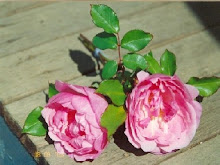 surely cat's ability to either announce their presence, or to disappear quietly into the background to near invisibility is one of their charms - Harebell on mouse patrol on the lucerne stockpile
surely cat's ability to either announce their presence, or to disappear quietly into the background to near invisibility is one of their charms - Harebell on mouse patrol on the lucerne stockpileEase of application is one important reason for lucerne hay being my preferred general purpose mulch. I can load 2 bales on a nursery trolley and wheel them around easily, each trolley load typically will cover 4-6 square metres - depending on how much I need to 'top up' existing mulch.
However the drought over the last several years has meant that it is not always available and I've needed to use aged bedding from pig sheds. Now this is absolutely wonderful stuff, however the time and effort involved in spreading it is significantly greater than lucerne.
A wheelbarrow load capacity only takes about 1.5-2 sq metres of bed coverage - so it involves many hours more walking, as well as the initial pitchforking into the barrow.
However its lifespan is probably a little longer than lucerne hay, one of its saving graces.
Both these forms of mulch offer excellent nutrient value to the soil as they break down, I stopped using wood based mulches about 20 years ago, and avoid straw too, magpies delight in messing it up and it offers no nutrient value whatsoever. My preference is to focus on feeding the soil, not the plant, and so these mulches are a major source of food for the roses, via the soil.
 "Pig Poo Hill" just the spot for games & gentle 'hill training' for four month old Minky (June 2007).
"Pig Poo Hill" just the spot for games & gentle 'hill training' for four month old Minky (June 2007). In all seriousness, if you don't already mulch, please try it -your plants and soil will be so much happier and you will make significant water savings.
It is important to wait until the ground has a good moisture level before applying mulch (pre planting) and if that means waiting for rain, so be it. I've sometimes waited months for sufficient rain before preparing a garden bed, then I let it settle and wait for the earthworms to start their work - again that can take weeks or months, depending on the inital soil condition.
I like to mulch to a depth of at least 4 inches, to ensure adequate moisture preservation, supress weeds, reduce soil temperature variability and provide sufficient material to encourage earthworms to the surface to begin their crucial work of soil improvement & aeration.
Earthworms, like most plant roots, appreciate cool comfortable temperatures (particularly in summer) in their living quarters. Try putting a thermometer into soil unprotected by mulch, and compare it with the temperature of soil protected by a nice blanket. The difference is quite striking.
It is important to wait until the ground has a good moisture level before applying mulch (pre planting) and if that means waiting for rain, so be it. I've sometimes waited months for sufficient rain before preparing a garden bed, then I let it settle and wait for the earthworms to start their work - again that can take weeks or months, depending on the inital soil condition.
I like to mulch to a depth of at least 4 inches, to ensure adequate moisture preservation, supress weeds, reduce soil temperature variability and provide sufficient material to encourage earthworms to the surface to begin their crucial work of soil improvement & aeration.
Earthworms, like most plant roots, appreciate cool comfortable temperatures (particularly in summer) in their living quarters. Try putting a thermometer into soil unprotected by mulch, and compare it with the temperature of soil protected by a nice blanket. The difference is quite striking.


No comments:
Post a Comment